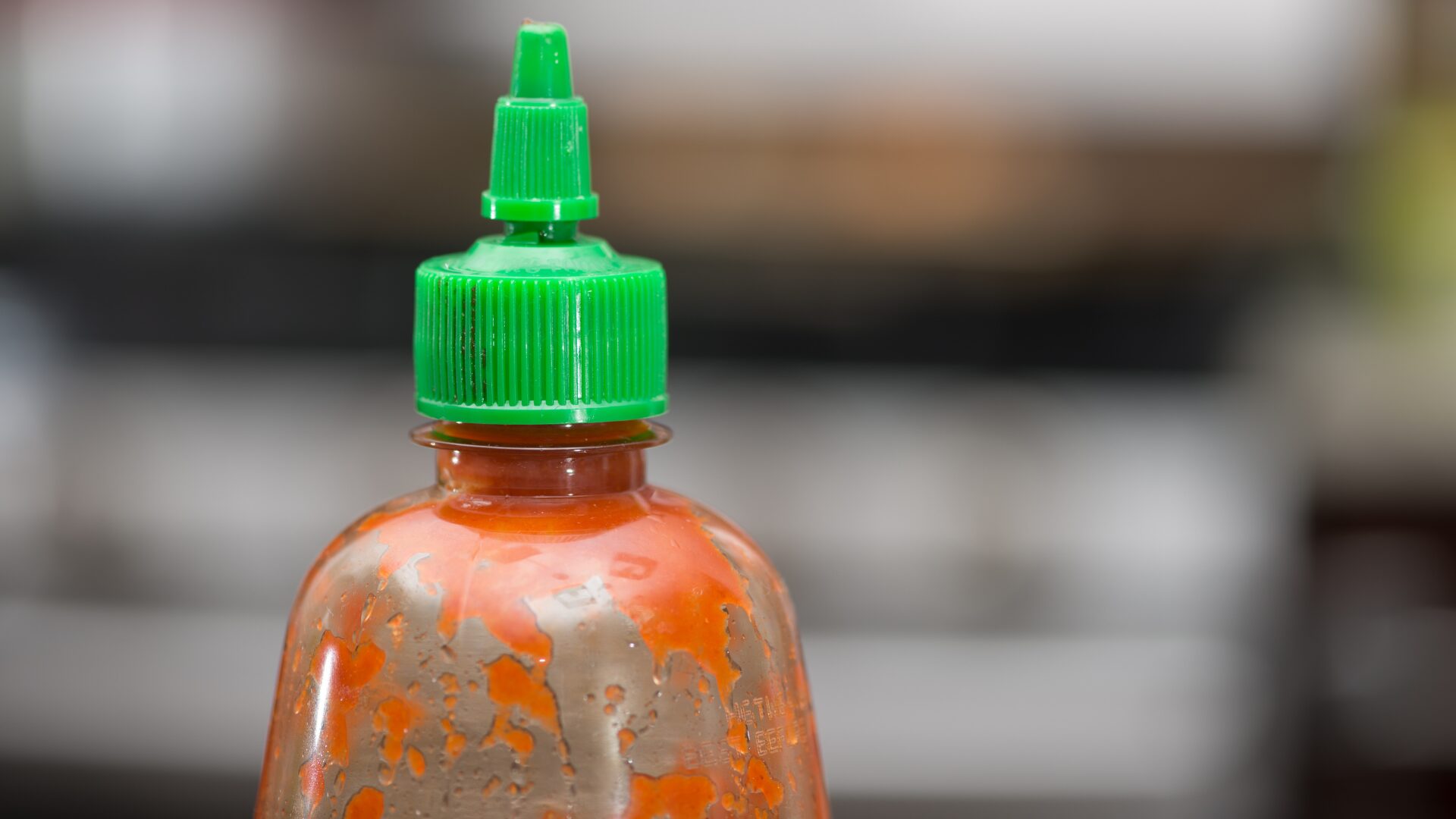The ubiquitous (and now iconic) red rooster-labeled sriracha sauce from Huy Fong Foods is in short supply once again. In early May, it was widely reported that Huy Fong Foods faced another supply shortage of crimson red winter jalapeño chiles that provide a streak of heat to the viscous sauce and, more importantly, lend it their vibrant and fiery hue.
Per the initial report from USA Today, Huy Fong goes through over 50,000 tons of chile peppers per year to make its crimson sauces. Chile peppers are labor-intensive to pick, and the heat and flavor varies depending on conditions and how ripe the peppers are off the vine. Scorching winter temperatures from El Nińo and dry conditions caused many of the peppers to stop ripening, effectively threatening Huy Fong’s market-leading product and the millions of hotheads (and chefs, and restaurants) that depend upon it for a little spicy whizz-bang in their meals.
In early May, Huy Fong Foods sent a letter to wholesale buyers and other vendors/stakeholders detailing that its supply of chili was “too green” to proceed with production and that all shipments would cease until after Labor Day. Too many green chiles in the finished product has lent a distinctly orange tint to its bottles, a far cry from the fire engine red rooster tail known around the world.
“We regret to inform you that we have decided to halt production until after Labor Day, when our next chili season starts,” the sauce maker said, noting that its chili garlic sauce and Sambal Oelek sauce and supply had also been affected. For decades, California-based Underwood Ranches had been Huy Fong’s only supplier of jalapeños until the partnership dissolved in 2017 over a financial dispute. Adding fuel to the hot-sauce fire, a jury later determined that Huy Fong had breached its contract with Underwood and committed fraud; Underwood was awarded over $23 million and today produces a sriracha sauce of its own, constituting one of Huy Fong’s primary rivals in the market.
Fans of the sauce took to social media in droves while others took matters into their own capsaicin-stained hands, crossing the border to Mexico to get as much as they could carry.
Needless to say, things are getting heated.
Has the Rooster Flown the Coop?
“Huy Fong really valued consistency in their sauce, so they only wanted to source peppers from one supplier,” said Dylan Keenan, owner of Heat Hot Sauce Shop, to TFI.
“While on the one hand, this is a good approach to keeping your product on-brand, in practice, if you run into issues with your sole supplier, then you end up in a situation like this.”
“Huy Fong Foods is grappling with severe supply chain issues, primarily due to its heavy reliance on a single supplier for red jalapeño chilies,” said Polly Mitchell-Guthrie to TFI. Mitchell-Guthrie is VP of industry outreach and thought leadership at Kinaxis, a digital supply chain service company.
“This significant loss of control over their supply chain affects product quality, putting them at risk of losing loyal customers and market share to competitors ready to seize the opportunity,” she added. “If Huy Fong does not address this issue promptly, the urgency to diversify and stabilize its supply chain will become even more critical.”
The lesson is clear: supply chain resilience is crucial.
“Huy Fong’s success over the summer and into the fall will depend on securing reliable alternative suppliers and improving agricultural practices,” she said. “Stabilizing their supply chain is essential to regain consumer trust and market share. If they can achieve this, they may recover. However, prolonged disruptions could lead to a loss of consumer loyalty and market share to more adaptable competitors.”
Seeing Red: Consumers Respond
“Huy Fong has done an amazing job over the years cultivating a loyal following for their brand while creating the sriracha category within the United States,” said Dan Doll, CEO of Bushwick Kitchen, an award-winning hot sauce manufacturer, to TFI.
That loyalty, however, comes with a cost – when the product changes, so too may its loyalists, who may look to other brands to fulfill their sriracha needs.
“First as a result of product availability, and then by a change in the product’s spice level,” consumers’ eyes (and hot sauce spend) are going to rivals and knockoffs.
“It is a really great example of the need to always engineer your business to put the consumer first,” Doll said, noting that in the ever-changing foodscape, brands need to strive to honor the key points that make their products unique and honoring what the loyalists have come to expect with each blast of hot sauce atop pizzas, burgers, and veggies.
“Post-pandemic supply chain challenges have called for the food and beverage industry to reframe our approach to procurement,” said Mathieu Pappalardo, VP and chief procurement officer at Materne (GoGo SqueeZ),” to TFI.
“Supply chain disruptions can be difficult to predict and impact even the largest manufacturers.”
Huy Fong doesn’t just lead the category in the United States – it by and large created the category over 40 years ago when it debuted its sriracha in 1980, fostering a dedicated fandom that has only grown via endless professional collaboration and licensing coupled with decidedly non-professional experimentation from hotheads coast to coast, kitchen to kitchen.
This summer, operators and consumers should prepare for an expensive secondary market if they can find any still-red Huy Fong-brand sriracha sauce; during the pandemic (and another shortage), bottles of the market leader were selling for upwards of $150 on eBay.
The Food Institute Podcast
Funding sources are drying up and inflation is making it harder and harder for higher-priced food brands to compete – what’s an early-stage food company to do? Dr. James Richardson, owner of Premium Growth Solutions and author of Ramping Your Brand, joined The Food Institute Podcast to discuss what types of food companies are succeeding under current industry dynamics.











